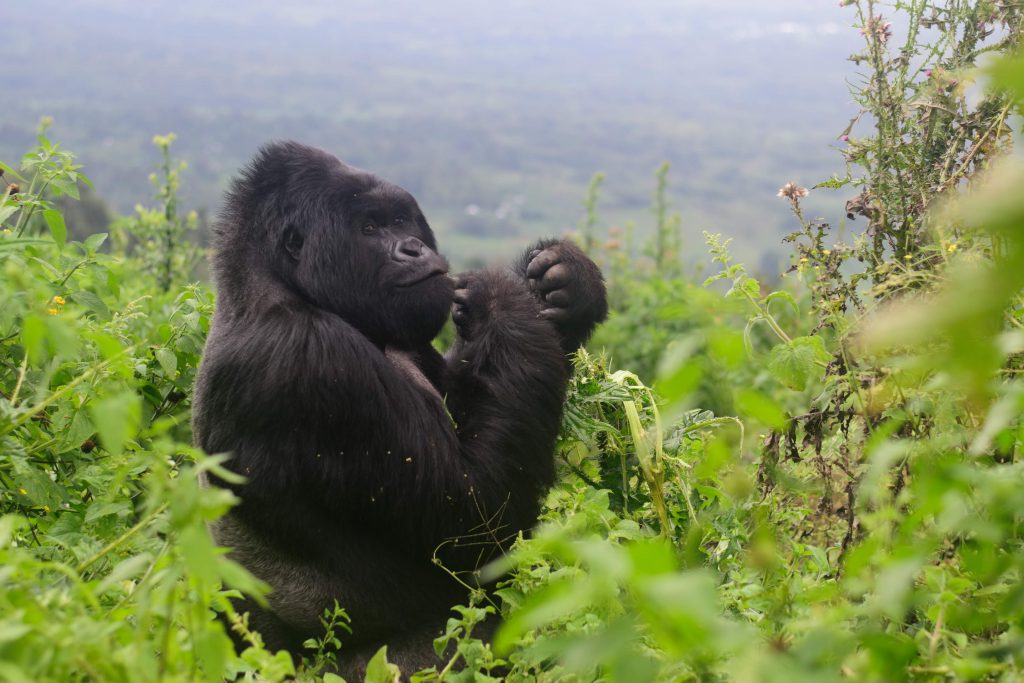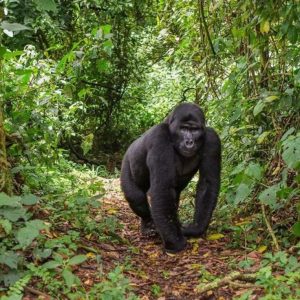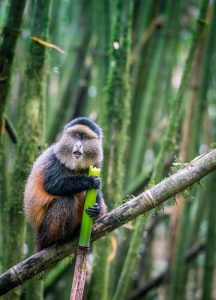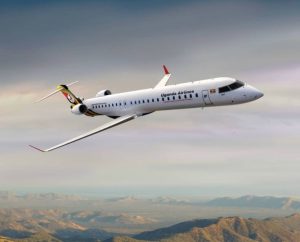What to consider on a gorilla trekking
Gorilla trekking in Uganda is a unique and sustainable wildlife adventure that allows you to interact with Africa’s endangered mountain gorillas in their natural environment. What to consider on a gorilla trekking
Imagine standing mere meters away from a majestic silverback gorilla. Its soft gaze meets yours in the thick greenery of an ancient jungle. This is not a scene from a movie; it is the reality of gorilla trekking in Uganda, an adventure that will leave you breathless and your perception of wild primates forever altered.
In this straightforward guide, we provide you with valuable insights into this extraordinary African safari experience, as well as everything you need to know to organize your unforgettable gorilla walk in Uganda.
Whether you’re a seasoned adventurer or a first-time trekker, we’ll provide you with insider secrets and practical assistance to make your journey nothing short of extraordinary. Let’s dig right in!
Why Choose Uganda for Gorilla Trekking?
Uganda, one of the safest African countries for tourists, provides a unique and immersive gorilla trekking experience that distinguishes it from other African safari locations. It’s not just the gorillas—though seeing these gentle giants in their natural habitat is undoubtedly a life-changing experience. But also the dreamy landscapes, vibrant cultures, and diverse trekking options that make Uganda a top choice for a gorilla trekking adventure.
Imagine sitting in quiet next to a mother gorilla caressing her newborn offspring, a touching experience that will leave you speechless. Such experiences are the reason why people fly from all over the world to trek gorillas in Uganda.
Gorilla trekking is surely a once-in-a-lifetime event, and having it in Uganda puts you in the conservation mix to help rescue these endangered primates. Sustainable tourism has allowed the endangered mountain gorillas to thrive in this tropical forest. And you may join this most revered Ugandan safari excursion.
Where Can I Go Gorilla Trekking in Uganda?
In Uganda, gorilla trekking is done in two places:
Bwindi Impenetrable National Park
Bwindi Impenetrable National Park is in southwestern Uganda, near the border with the Democratic Republic of Congo. It is specifically located in the Rift Valley, on the border of the Albertine Rift. According to the Uganda Wildlife Authority, the park covers a huge area of mist-covered hillsides and is well-known for its rich rainforest habitat and mountain gorilla population.
This UNESCO World Heritage site is home to nearly half of the world’s mountain gorilla population. Trek through Bwindi’s lush woods, which are split into four sectors: Buhoma, Ruhija, Rushaga, and Nkuringo. Each area has its own set of paths and difficulty levels, appealing to hikers of various skill levels.
Mgahinga Gorilla National Park
Mgahinga Gorilla National Park is situated in southwestern Uganda, specifically in Bufumbira County, Kisoro District. It is located on the extreme border of Rwanda and the Democratic Republic of Congo. The park is approximately 510 kilometers by car from Uganda’s capital, Kampala.
Mgahinga is smaller but no less interesting, with only one habituated gorilla family. The park’s volcanic nature provides a magnificent backdrop for your trip, with the opportunity to summit peaks and see lively golden monkeys.
Plan Your Gorilla Trekking Adventure: A Step-by-Step Guide
Obtain your gorilla trekking permit
A gorilla permit is a required ticket. Permits are restricted in quantity and must be booked well in advance, especially during high seasons. A permit in Uganda now costs USD 800 for foreign non-residents. Consider reserving through a respected tour operator, such as Abunda Discoveries Uganda, to ease the process and assure a positive experience.
Choose the Best Time to Go
While gorilla trekking is possible all year, the dry seasons (December to February and June to August) typically provide more comfortable hiking conditions. However, each season has its charm, so choose the finest time for your vacation based on your interests.
Choose Your Accommodation and Transportation
Bwindi and Mgahinga provide a variety of lodging alternatives, ranging from luxury eco-lodges to low-cost campsites. Book one near the trekking center. Transportation can be organized through tour operators or privately, with alternatives such as aircraft, private vehicles, and public buses.
Pack Your Gorilla Trekking Essentials
Be prepared for changing weather conditions, as the jungles are unpredictable. Pack sturdy hiking boots, waterproof gear, long-sleeved shirts and pants, a hat, sunscreen, bug repellent, and a camera to document your wonderful experiences. A comfortable daypack is also required to carry your essentials during the hike.
What to expect on your Uganda gorilla trek
Your Uganda gorilla trekking journey will begin with an early morning briefing at the park headquarters. Experienced guides will deliver important information about gorilla behavior, safety precautions, and what to expect on the journey. What to consider on a gorilla trekking
The walk itself is an amazing excursion through the dense rainforests of Bwindi or Mgahinga, with pathways winding through rich flora and changing topography. The trip can last anything from 30 minutes to several hours, depending on the location of the gorilla family you’ll visit.
Prepare to be enchanted by the gorillas. You’ll have one hour to watch these fascinating creatures in their natural environment. Watch Africa’s gorillas play, groom each other, and forage for food. Witness the silverback’s kind leadership and the youngsters’ lively antics. This is an unforgettable experience.
Additional Tips for Gorilla Trekking:
- Fitness, while moderate fitness is sufficient, expect several steep hills and uneven terrain.
- Weather, Uganda’s weather is variable, so prepare for both rain and sunshine.
- To shoot gorillas, use a camera with a good zoom lens and avoid using flash to prevent disturbing the gorillas.
- Tipping your guides and porters is expected and appreciated.




